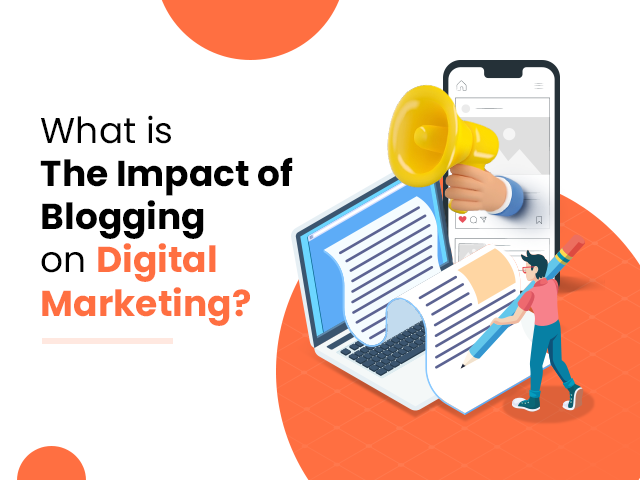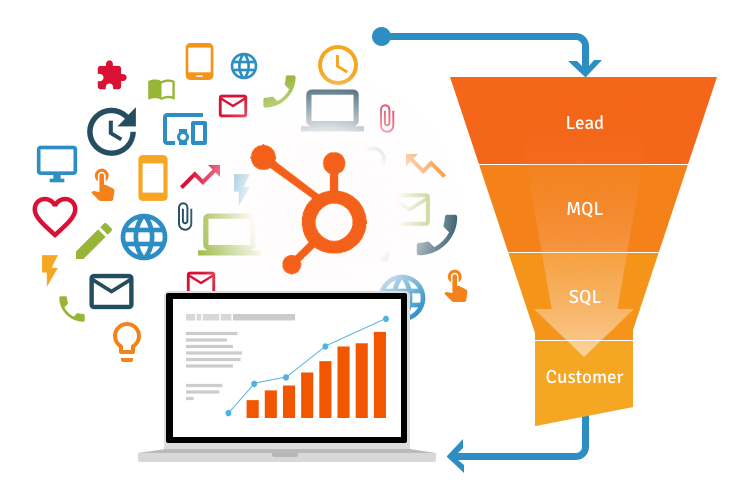What if there used to be one digital Blogging and marketing approach that would extend your leads with the aid of sixty seven percent, make it thirteen instances extra possibly that you would experience a advantageous ROI for your effort, and assist you to acquire ninety seven percentage extra hyperlinks to your website? Would you embody that strategy? Of path you would. Not to do so would be virtually like throwing cash away.
How Blogging Bolsters Digital Marketing Efforts

Blogging is a powerful tool that can significantly enhance digital marketing efforts in several ways. One of the most significant benefits of blogging is that it increases website traffic. By regularly publishing fresh and relevant content on your website, you can attract visitors and increase your website’s traffic. Additionally, optimizing blog posts for search engines can help you attract more organic traffic to your site, leading to more leads and sales.
SEO and Traffic
SEO (Search Engine Optimization) and traffic are closely related as SEO is a strategy to increase the traffic of a website by optimizing its content to rank higher in search engine results pages (SERPs).
SEO involves various techniques and practices to improve a website’s visibility and ranking in search engine results. Some of the key aspects of SEO include keyword research, on-page optimization, off-page optimization, technical optimization, and content creation.
When a website ranks higher in SERPs for relevant search queries, it is more likely to attract organic traffic. Organic traffic refers to visitors who find a website through a search engine, rather than through paid advertising or other means.
Lead Generation, Nurturing, and Conversion:

Lead generation, nurturing, and conversion are critical components of the sales process. These stages help businesses attract potential customers, build relationships with them, and convert them into paying customers.
Lead generation involves identifying and attracting potential customers who are interested in a business’s products or services. Some common lead generation strategies include search engine optimization, social media marketing, content marketing, and email marketing. The goal of lead generation is to capture the contact information of potential customers, such as their email address, phone number, or social media profile.
Once a lead has been generated, the next stage is lead nurturing. This involves building a relationship with the lead by providing them with valuable information, engaging with them on social media, and offering personalized content. The goal of lead nurturing is to build trust with the lead, establish the business as an authority in their industry, and move the lead closer to making a purchase.
Finally, the last stage is conversion. This involves persuading the lead to take action and become a paying customer. Conversion can happen in various ways, such as making a purchase, signing up for a free trial, or requesting a consultation. The key to successful conversion is to provide the lead with a compelling reason to take action, such as a discount, a limited-time offer, or a personalized recommendation.
Insight into Your Audience:
Having insight into your audience is critical for businesses to create effective marketing strategies, develop products that meet their needs, and ultimately grow their business. Here are some key ways to gain insight into your audience:
- Conduct market research: Conducting market research is a systematic process of collecting and analyzing data about your target audience, including their demographics, behavior, preferences, and pain points. This can be done through surveys, interviews, focus groups, and other research methods.
- Analyze website analytics: Analyzing website analytics, such as Google Analytics, can provide valuable information about your audience, including their geographic location, age, gender, and interests. This data can help you create targeted marketing campaigns and content that resonate with your audience.
- Use social media analytics: Social media analytics can help businesses gain insight into their audience’s behavior, preferences, and interests. By analyzing metrics such as engagement rates, follower growth, and demographics, businesses can create social media content that resonates with their audience.
- Monitor customer feedback: Monitoring customer feedback, such as product reviews, customer support interactions, and social media comments, can provide valuable insight into your audience’s pain points, preferences, and satisfaction levels. This feedback can help you improve your products and services and create better customer experiences.
Purpose Of Blogging

In summary, the purpose of blogging is to achieve the following goals:
- Establish online presence: Blogging helps individuals and businesses establish an online presence, making it easier for them to be found by potential customers and clients.
- Build brand awareness: Blogging can help businesses build brand awareness by creating content that resonates with their target audience and showcases their expertise and values.
- Drive website traffic: Blogging can drive website traffic by creating content that ranks well in search engine results and is shared on social media and other channels.
- Position as an authority: Blogging can position individuals and businesses as authorities in their industry by creating valuable, informative, and engaging content.
- Nurture leads: Blogging can help businesses nurture leads by providing them with personalized content that addresses their pain points and needs, building trust and rapport.
- Improve SEO: Blogging can improve search engine optimization by creating fresh, relevant, and keyword-rich content that ranks well in search engine results.
The Bottom Line
In blogging, the “bottom line” refers to the ultimate goal or purpose of the blog. While this can vary depending on the specific goals of the blogger or business, the bottom line typically includes the following:
- Driving traffic: One of the primary goals of blogging is to drive traffic to a website or online platform. By creating engaging and informative content, bloggers can attract new visitors and retain existing ones, ultimately leading to increased traffic and exposure.
- Building relationships: Blogging can help bloggers build relationships with their audience by engaging with readers through comments, social media, and other channels. This can help build trust and credibility, leading to a stronger connection with their audience.
- Generating leads: By creating valuable content that addresses their audience’s pain points and needs, bloggers can generate leads and grow their email list, ultimately leading to increased sales and revenue.
- Establishing authority: By creating high-quality and informative content, bloggers can establish themselves as authorities in their field, which can lead to increased credibility and exposure.
- Increasing revenue: Blogging can ultimately lead to increased revenue through advertising, affiliate marketing, product sales, and other monetization strategies.
